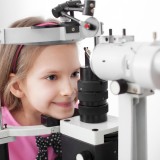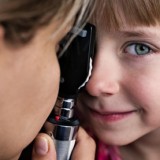Rio 2016 Olympian Sells Silver Medal for Pediatric Retinoblastoma Patient
It’s stories like these that warm our hearts and give hope in times of sadness. Piotr Malachowski, a Polish Olympian who won a silver medal in discus throwing, has auctioned off his coveted silver medal. Why? To help 3-year-old Olek Szymanski receive a life-saving operation to treat his pediatric retinoblastoma. Briefly after his Olympic performance, Olek’s mother reached out to Malachowski for help. She explained that he has been battling the condition for nearly two years, and there was no way that Polish doctors would be able to cure him. He would need to fly to an ophthalmic oncologist in New York for the operation, and they needed $126,000 total to fund it. Uniting the Internet Malachowski took to social media to inspire his followers. On Facebook, he posted: “In Rio, I fought for gold. Today I call on all people – let us fight together for something that is even more valuable. For the health of this fantastic boy.” A Polish foundation called Siepomaga had already raised one-third of the cost, so Malachowski set up an online auction to account for the remaining $84,000. A few days into the auction, the top bidder had pledged $19,000. However, he unexpectedly took down the auction shortly after, as Polish billionaires Sebastian and Dominika Kulczyk agreed to buy the medal for the full remaining cost needed by the Szymanski family. A Glimpse into Retinoblastoma Treatment Pediatric retinoblastoma is a rare and very aggressive condition, meaning that finding the right treatment is critical, and critical to obtain in a timely manner. In order to assess all aspects of treatment, children may need to see specialists such as a pediatric ophthalmologist, ocular oncologist, pediatric oncologist, and radiation oncologist. Apart from doctors, the patient will see a number of healthcare professionals such as physician assistants, nurse practitioners, therapists, nurses, social workers, psychologists, and genetic counselors – among others. Finding Support As with the Szymanskis, some families will need to reach out for support to ensure that the child receives the best possible care. The American Cancer Society has an extensive list of pediatric retinoblastoma support resources so that children and their families don’t need to weather the storm alone. These resources include therapeutic and emotional support, as well as opportunities to receive financial help for treatment-related...
read moreHow Socioeconomic Status Can Impact Kids’ Eye Health
Research is showing that insurance isn’t the only key factor in whether or not children are getting proper eye care. The University of Michigan conducted a study that examines the relationship between kids’ eye health and the socioeconomic status of their families. It shows that children from less affluent homes are less likely to be diagnosed with dangerous eye conditions before they permanently impact vision. University of Michigan Study Researchers looked at commercial health insurance data for almost 900,000 children up to age 14. Based on insurance claims, the study examined the frequency of optometrist and ophthalmologist visits between 2001 and 2014, along with the rates of diagnosis for amblyopia (lazy eye) and strabismus (crossed eyes). Importance of Early Diagnosis These conditions are important to diagnose early, as they can pose serious risks. With these conditions, each eye sees differently. This causes the brain to suppress vision in one eye. Research shows that permanent vision loss can result if the conditions aren’t corrected by the time kids are 10 years old. Socioeconomic Status and Diagnosis Rates The study, which was published in the August 2016 issue of Health Affairs, shows that kids in families of the lowest net worth bracket (under $25,000 per year) visited an eye care professional 16% less frequently than kids who were in the middle-income group of $150,000 to $250,000 per year. Furthermore, kids in the highest bracket (more than $500,000) visited the eye doctor 19% more than the middle-income category. Missed Eye Health Opportunities As one can assume, eye care visits are strongly correlated to diagnosis of abnormal eye conditions, a result which this study confirmed. Overall, researchers estimate that roughly 12,800 lower-income children didn’t receive a needed strabismus diagnosis. Likewise for amblyopia cases, in which an estimated 5,400 cases went undiagnosed. Theories for the Discrepancy So if these families all have insurance, what’s causing the differences? Experts suggest that lower-income families face more obstacles than their more affluent counterparts. For example, lower-income parents and guardians may have transportation issues to and from the eye care office, in addition to potential issues taking time off work to take their children. Eye care providers may also be sparser in lower-income neighborhoods. Regular Visits, Better Outcomes The importance of regular eye care visits are often overlooked by individuals and families across all levels on the socioeconomic spectrum. When possible, we urge our readers to place special attention on making sure that their children are growing healthily and safely, with confirmation from a...
read moreAdvances in Retinoblastoma Treatment
Retinoblastoma treatment often involves the use of a combination of procedures such as radiation therapy, chemotherapy, surgery, cryotherapy, thermotherapy, and photocoagulation. Each of these treatments has seen advances that may indicate promising results for retinoblastoma patients. However, many retinoblastoma specialists are cautious to implement these new treatments until clinical studies can provide evidence of successful results with minimal risks or side effects. Newer techniques in radiation therapy and chemotherapy have become more popular over the past decade. Radiation Therapy Advances Radiation therapy is a common form of retinoblastoma treatment. In radiation therapy, high energy x-rays are delivered directly to the tumor, killing the cancer cells. There are two main forms of radiation therapy used to treat retinoblastoma: external beam radiation and brachytherapy, also known as plaque radiotherapy. One of the main concerns with radiation therapy is overexposure to radiation, which may contribute to the development of new cancer cells. Intensity Modulated Radiation Therapy Intensity modulated radiation therapy (IMRT) is a newer form of external radiation therapy that has gained attention from cancer experts. In intensity modulated radiation therapy, radiation beams are shaped and aimed at the tumor from different angles. The intensity of the beams is adjusted to limit the amount of radiation that reaches healthy tissues. In turn, doctors may be able to deliver higher doses of radiation to the tumor while reducing the side effects associated with unnecessary radiation exposure. Chemotherapy Advances Chemotherapy remains a staple in retinoblastoma treatment, as with other forms of cancer. Chemotherapy involves delivering chemotherapy drugs internally through injection or taking the drugs by mouth. Chemotherapy is often injected into veins and arteries. For retinoblastoma, chemotherapy treatment is often injected into or around the patient’s eye to deliver chemotherapy drugs directly to the tumor site. Intravitreal Chemotherapy Intravitreal chemotherapy is a type of retinoblastoma chemotherapy that involves the vitreous, or fluid that fills the eyeball. Intravitreal chemotherapy injects chemotherapy drugs directly into the vitreous. This process may be used to treat tumors which are widespread in the eye and have not been responsive to other types of retinoblastoma treatment. Intravitreal chemotherapy has been reported as particularly successful in patients with vitreous seeding. Vitreous seeding occurs when small pieces of the retinoblastoma tumor break off and “float” within the vitreous. For decades, intravitreal chemotherapy was avoided by retinoblastoma specialists under the impression that this treatment posed more danger than benefit. However, results from new studies indicate that this technique achieved complete vitreous response in a high percentage of patients who underwent the procedure. This provides a promising outlook for retinoblastoma patients and treatment...
read more


















